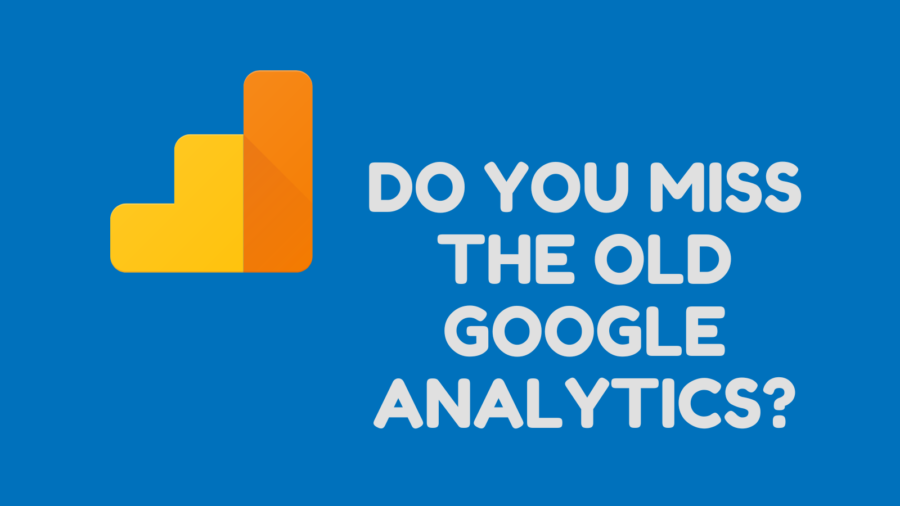Analytics tools are pivotal in understanding user behavior, optimizing campaigns, and making data-driven decisions. For years, Google Analytics has been the go-to platform for businesses seeking valuable insights into their online performance. However, with the recent introduction of Google Analytics 4 (GA4), a wave of nostalgia has swept over users who fondly remember the simplicity and familiarity of the old Google Analytics.
The Old Google Analytics
Once upon a time, Google Analytics stood as the beacon of web analytics, offering a comprehensive suite of features that empowered marketers and website owners. The classic interface provided a user-friendly dashboard, enabling users to track website traffic, monitor user engagement, and gain valuable insights into the performance of online marketing efforts.
The simplicity and efficiency of the old Google Analytics were its defining characteristics. Marketers found solace in its familiar reports, intuitive navigation, and robust tracking capabilities. Whether it was analyzing conversion rates, studying user demographics, or evaluating the success of marketing campaigns, Google Analytics was the trusty companion of digital marketers worldwide.
The Transition to GA4
With the digital landscape evolving rapidly, Google recognized the need for a more advanced analytics solution to meet the demands of modern businesses. Enter Google Analytics 4, the next-generation analytics platform designed to provide a more holistic view of user interactions across various devices and platforms.
The transition from the old Google Analytics to GA4 has sparked a mix of emotions among users. While some embrace the new features and enhanced capabilities, others yearn for the classic interface’s simplicity and familiarity. The question on everyone’s mind is: Does GA4 live up to the legacy of its predecessor?
What GA4 Brings to the Table
Google Analytics 4 represents a significant shift in how businesses approach analytics. Unlike its predecessor, GA4 focuses on user-centric measurement, providing a more comprehensive understanding of user journeys and interactions across different touchpoints. The new platform integrates machine learning to deliver predictive metrics, helping businesses anticipate user behavior and tailor their strategies accordingly.
One notable feature of GA4 is its event-driven data model, allowing users to track many user interactions beyond traditional pageviews. This flexibility enables marketers to gather insights from emerging technologies such as progressive web apps and single-page applications, providing a more accurate representation of user engagement in today’s diverse digital landscape.
Moreover, GA4 emphasizes privacy and data retention, aligning with the growing concerns around user privacy and data protection. With enhanced user consent controls and the ability to define data retention policies, businesses can ensure compliance with evolving privacy regulations while leveraging analytics’ power.
Challenges with GA4 Adoption
Despite its innovative features, the transition to GA4 hasn’t been without challenges. Many users, accustomed to the simplicity of the old Google Analytics, have found themselves grappling with the learning curve associated with the new platform. The revamped interface restructured reports and introduced new terminology has led to a period of adjustment for users navigating the GA4 environment.
Additionally, the absence of certain familiar reports and metrics in GA4 has prompted users to explore alternative ways of obtaining the insights they once took for granted. While the new platform offers a wealth of information, users must adapt their analytics strategies to capitalize fully on GA4’s capabilities.
Integrating the Best of Both Worlds
As users grapple with the transition, it’s essential to recognize that Google Analytics 4 doesn’t seek to erase the legacy of its predecessor but rather build upon it. Google acknowledges the sentiment surrounding the classic interface and continues supporting Universal Analytics, allowing users to maintain access to historical data and reports.
Businesses are encouraged to take a hybrid approach, leveraging the strengths of both platforms. While the old Google Analytics excelled in simplicity and familiarity, GA4 brings innovation and a more comprehensive approach to user-centric analytics. Marketers can harness the power of both platforms to gain a nuanced understanding of user behavior and optimize their strategies accordingly.
Embracing the Future of Analytics
In the ongoing debate of nostalgia versus innovation, the transition from the old Google Analytics to GA4 symbolizes the evolution of analytics in response to the dynamic digital landscape. While the classic interface holds a special place in the hearts of many users, GA4 represents a step toward a more sophisticated, user-centric, and privacy-conscious analytics future.
As businesses adapt to the changes, it’s crucial to approach the transition with an open mind, embracing the opportunities presented by the new features and capabilities of GA4. The future of digital marketing lies in a data-driven approach that aligns with user expectations and regulatory requirements, and Google Analytics 4 stands at the forefront of this transformative journey.
In conclusion, whether you miss the old Google Analytics or find excitement in the innovations of GA4, the key lies in finding a harmonious balance that meets the unique needs of your business. As the digital landscape continues to evolve, so must our approach to analytics, and with Google Analytics 4, the future looks promising for those ready to embrace the change.


